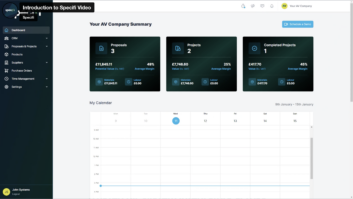
Image: ThinkStock
There use to be a time when you could sell against your competition on the value of your business. Today, it is all about price, even when the client does not know what that price is. They believe they can simply perform a Google search and become as knowledgeable as you are.
A Win: Recently, I quoted a dedicated theater for a client without giving itemized pricing. He told me he searched all the items and came up with a cheaper price than the price I had quoted. He told me, “You should be able to get these items for less than I can find them for!”
Yes, sir, we call that profit.
What I actually explained to him was that I had given him a budget without all the smaller parts to make it work, to give him an idea of pricing. He asked me to sharpen my pencil (one of my favorite lines). I went back to the office added the baluns, HDMI cables, and other small parts, then took off a discount bringing the price to nearly the same.
He gave his deposit a day later.
A Loss: Just this week, after I had quoted a Sonos system to a client who was remodeling a kitchen complete with in-ceiling speakers, he called to inform me that his buddy on Thanksgiving had told him about a brand new product that would do the same thing for only $35. After researching myself while on the phone, I explained the new Chromecast Audio was just a device that plugs into your receiver and allows one to play music wirelessly. I explained that this device does not replace the Sonos Connect Amp, as you still need power for the speakers.
He continued to tell me it would replace Sonos, even after I read the CNET quote that the unit did the same thing as the Sonos Connect—an unpowered unit.
Mr. Client then asked me to research the piece and get back to him.
I said, Mr. Client, “You can get a steak at Applebees, Outback, or a high-end steak restaurant. They all say they are USDA beef. You have to decide on the experience you desire.”
He confessed he already ordered the units, so I told him to play around with them and give me a call back when he was ready.
The Battle: The design is the hardest element to convince the mass-market client of the value. Sure, you found parts for less (which is funny to me, because most times, I have not given you the model number), but what about the part where I told you exactly what parts you needed to make the system work? Is there no longer a value to that?
We tell our clients that we sell products that work. We know how the units stand up throughout the test of time, and not just how it acts out of the box for a reviewer. The value of this has become lost as everyone seems to know two things: their name, and audio; everyone has a buddy giving them advice.
So my question to you, faithful reader, is: how do you combat the invisible? How do you defend yourself against the tyrant of the search that will be done by that one type of client who will also be the one who eats up the most time?These are the clients who fill in the gaps between the larger jobs, the ones not interested in the long-term relationship of the power of the solution.
How do you handle these potential buyers?







